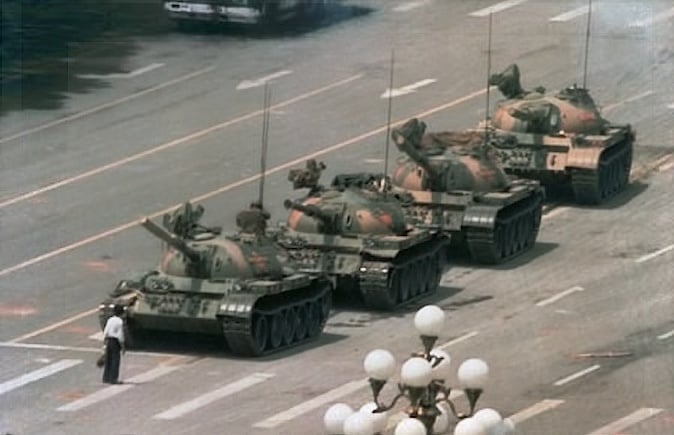Remembering Tiananmen Revolution after 34 years !
The events surrounding the Tiananmen Square protests of 1989 are steeped in complexity and a deep societal divide that emerged from China’s history. Yet, the narrative we have been fed in the West paints a simplistic and distorted picture, designed to vilify the Chinese government and fuel imperialist agendas. It is time to delve into the emotional nuances and untangle the truth from the web of misinformation.
The story we often hear depicts courageous student activists gathering in Tiananmen Square, bravely demanding democracy and freedom while facing a repressive regime. According to this narrative, the Communist Party of China ruthlessly cracked down on these peaceful protesters, unleashing violence and causing widespread death and destruction. But this version of events is a fabrication, a convenient myth perpetuated by the West for over three decades to justify their aggression against China.

Even the iconic image of the “tank man” has been deliberately manipulated by the U.S. media to serve its anti-China propaganda. This powerful photograph, which has become synonymous with the Tiananmen Square protests, is misrepresented to fit a particular narrative. The truth is that the tanks were leaving the square, not entering it, and the man in the photo was not run over as implied. In fact, he engaged in a remarkable standoff with the tank, repeatedly blocking its path, climbing on top, and even speaking to the driver. The image symbolizes defiance and resilience rather than tragedy.
To truly understand the Tiananmen protests, we must acknowledge their complex roots. They were not simply a result of an authoritarian government suppressing unprovoked pro-democracy activists. Instead, they were a manifestation of societal divisions that had lingered since the Cultural Revolution and were further exacerbated by the “reform and opening up” policies of Deng Xiaoping. It was a multifaceted story of a nation grappling with economic development while navigating internal and external contradictions.
The Great Proletarian Cultural Revolution, initiated by Mao and his allies in 1966, set the stage for the subsequent events. This struggle within the Communist Party between Mao’s faction, which aimed to prevent revisionism and uphold revolutionary principles, and Deng Xiaoping’s faction, which advocated for opening China to the global capitalist economy, shaped the path the country would take. Both factions recognized the need for economic development to overcome the legacy of colonial domination, but they differed in their approaches.
Mao saw the Cultural Revolution as a means to continue the class struggle and bridge the rural-urban divide. While it brought political turmoil and social upheaval, it also achieved significant milestones in education reform and expanding medical care to rural areas. However, the deep-seated disparities between rural and urban populations persisted, leading to heightened tensions that ultimately played a role in the Tiananmen protests.
These events cannot be reduced to a simple dichotomy of good versus evil or oppressive government versus freedom-seeking individuals. They represent a complex tapestry of historical, ideological, and social factors. It is essential to approach this chapter in history with nuance, empathy, and a genuine desire to uncover the truth rather than perpetuate misleading narratives.
As we commemorate the 34th anniversary of the Tiananmen Square protests, let us strive for a deeper understanding, free from the distortions of propaganda. May we approach this complex history with open hearts and minds, acknowledging the emotional weight it carries for all those involved. By seeking truth and promoting dialogue, we can foster a more nuanced and compassionate perspective, transcending the simplistic narratives that have perpetuated division for far too long.
news and image source : https://www.liberationnews.org/

